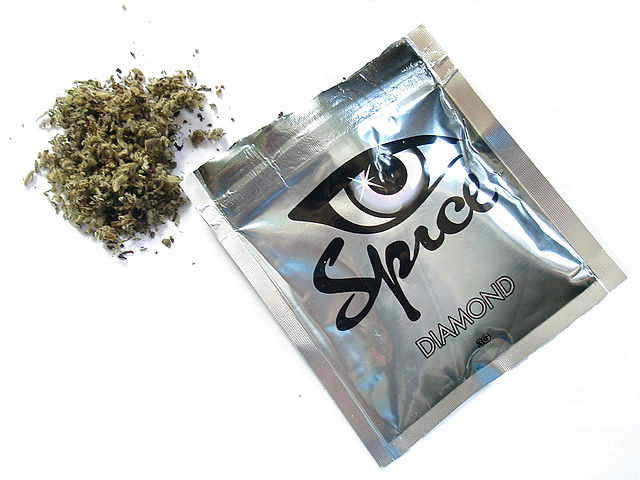The criminalization of cannabis has lead to the creation of a synthetic cannabinoid analogue black market that is far more dangerous than the cannabis plant, a new study reveals.
A revealing new study published in the journal Clinical Toxicology shows that people under the influence of synthetic cannabinoids (also known as “spice”) undergo far greater impairments than those using marijuana. In the study, entitled “Differential physiological and behavioural cues observed in individuals smoking botanical marijuana versus synthetic cannabinoid drugs,” researchers sought to measure performance and behaviour by reviewing arrest reports generated by law enforcement drug recognition experts (DRE) to evaluate motorists arrested for impaired driving.
Researchers used the following study methods:
Data were from a retrospective, convenience sample of de-identified arrest reports from impaired drivers suspected of using synthetic cannabinoids (n = 100) or marijuana (n = 33). Inclusion criteria were arrested drivers who admitted to using either synthetic cannabinoids or marijuana, or who possessed either synthetic cannabinoids or marijuana; who also had a DRE evaluation at the scene; and whose blood screens were negative for alcohol and other drugs. Exclusion criteria were impaired drivers arrested with other intoxicants found in their drug or alcohol blood screens. Blood samples were analyzed for 20 popular synthetic cannabinoids by using liquid chromatography-tandem mass spectrometry. Delta-9-tetrahydrocannabinol (THC) and THC-COOH were quantified by gas chromatography-mass spectrometry. Statistical significance was determined by using Fisher’s exact test or Student’s t-test, where appropriate, to compare the frequency of characteristics of those in the synthetic cannabinoid group versus those in the marijuana group.”
The results were reported as follows
16 synthetic cannabinoid and 25 marijuana records met selection criteria; the drivers of these records were arrested for moving violations. Median age for the synthetic cannabinoid group (n = 16, 15 males) was 20 years (IQR 19-23 years). Median age for the marijuana group (n = 25, 21 males) was 20 years (IQR 19-24 years) (p = 0.46). In the synthetic cannabinoid group, 94% (15/16) admitted to using synthetic cannabinoids. In the marijuana group, 96% (24/25) admitted to using marijuana. Blood was available for testing in 96% (24/25) of the marijuana group; 21 of these 24 had quantitative levels of THC (mean + SD = 10.7 + 5 ng/mL) and THC-COOH (mean + SD = 57.8 + 3 ng/mL). Blood was available for testing in 63% (10/16) of the synthetic cannabinoid group, with 80% (8/10) of these positive for synthetic cannabinoids. Those in the synthetic cannabinoid group were more frequently confused (7/16 [44%] vs. 0/25 [0%], p ≤ 0.003) and disoriented (5/16 [31%] vs. 0/25 [0%], p ≤ 0.003), and more frequently had incoherent, slurred speech (10/16 [63%] vs. 3/25 [12%], p = 0.0014) and horizontal gaze nystagmus (8/16 [50%] vs. 3/25 [12%], p = 0.01) than those in the marijuana group.”
The researchers concluded:
Drivers under the influence of synthetic cannabinoids were more frequently impaired with confusion, disorientation, and incoherent, slurred speech than drivers under the influence of marijuana in this population evaluated by drug recognition experts.”
This study drives to the heart of the problem that results from criminalizing of marijuana, namely, the subsequent creation of a burgeoning black market of synthetic cannabis analogues. The synthetic “spice” market is a direct result of the effort to evade laws that make possessing and using marijuana plants illegal. The novel new synthetic cannabinoids exist in a legal loophole:
There are many different structures of synthetic cannabinoids because the Controlled Substance Act has outlawed certain structures. A chemist can alter an already known structure by changing a minor detail creating a new legal drug.” [Source]
These synthetic analogues, like all novel chemical compounds, have no history of being used by the human body and therefore can cause a wide range of physical and psychological adverse effects which, in the case of driving under their influence, can lead to serious injuries and death.
In the study, motor vehicle crashes occurred in 31% (5/16) of the cases involving synthetic cannabis users and in only 4% (1/25) of the cases involving marijuana users. While the sample size of the study was small, it may be an indication relative degree of impairment between the two substances is significant. This is also reflected in the fact that disorientation and confusion occurred, respectively, in 31% and 44% of drivers under the influence of synthetic cannabinoids, but did not occur in any of the drivers under the influence of marijuana. Also, incoherent speech and horizontal gaze nystagmus [an involuntary jerking of the eye] were 4 to5 times more common in those under the influence of synthetic cannabinoids.
Comparisons between synthetic cannabis and marijuana users.
The inherent therapeutic value of cannabis and its many natural cannabinoids is becoming more commonly recognized (use our cannabis database to view the first-hand research) and on a state-by-state basis, the fundamentally irrational criminalization of cannabis for both medical and recreational use is being overturned. One positive result of this shift may be a deceleration of the concerning increase in the use of synthetic cannabinoids.
*Article originally appeared at Green Med Info.













